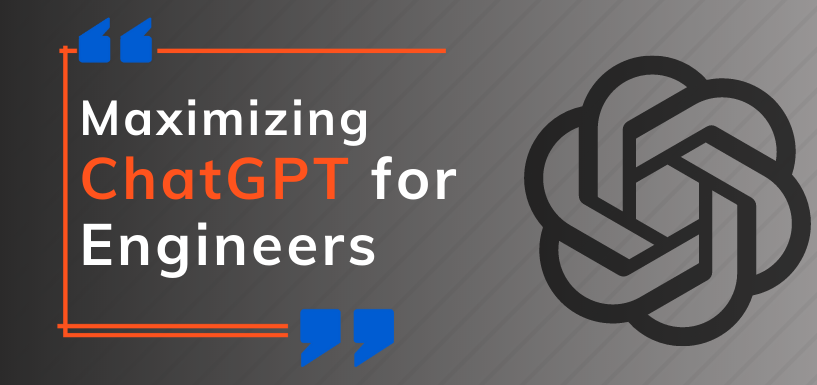

| August 02, 2023 |

ChatGPT responses are not equal for every user. How you interact with this AI model is something that holds the key to unlocking the maximum value from it. Interacting with ChatGPT is essentially a science. There are ways to be smart at it. Let us explore some of the ChatGPT hacks for engineers.
Embrace “Prompt Engineering”
Prompt engineering is all about optimizing your input to effectively communicate with a large language model like ChatGPT. The focus is on selecting the appropriate words, phrases, sentence structures, and punctuation. It can significantly enhance the interaction between you and ChatGPT. You can elicit more accurate and relevant responses from ChatGPT, by formulating clear and specific “prompts”.
Engage in a conversation
You know that the only way you can use ChatGPT is by engaging it in conversations. It is a conversational AI, after all. So, avoid trying to get all the answers you want in one go. Like you would with a human expert, consider it a conversation. Give the first level of information and then get its response, and then - after knowing where ChatGPT is coming from, proceed with additional information. This is one way of training ChatGPT. This is important for you to get very specific and personalized responses.
Provide the Specific Context
Provide context and constraints when seeking ChatGPT’s assistance. Suppose, you are asking ChatGPT to assist you in debugging your program, don’t simply ask a generic question like "How do I solve this error?". But be specific: "I encountered error XYZ in my Python code while trying to implement feature ABC. Here's the relevant code snippet and error message. What could be causing this issue, and how can I resolve it?" This specific and detailed question provides ChatGPT with the necessary context to offer more targeted and actionable advice.
Constraints Hold the Key
Focus on delineating the boundaries of a problem by defining the input, process, and output restrictions of the solution search. Provide specific guidelines and limitations. For example, you can define the programming language, libraries, or frameworks to be used. This helps ChatGPT provide language-specific code snippets or recommendations tailored to your needs. Or specify the desired characteristics or constraints for the solution's output. This could include performance requirements, security considerations, or compatibility constraints. By communicating these constraints, ChatGPT can generate responses that prioritize the desired output characteristics and offer relevant guidance.
It's important to ensure that the constraints are clear, appropriate, and accurately represent the problem you're trying to solve. Making the most out of ChatGPT lies in guiding it, training it, providing it with more context - and asking it the right questions in the right way.
Enter your email address to subscribe to this.
Categories